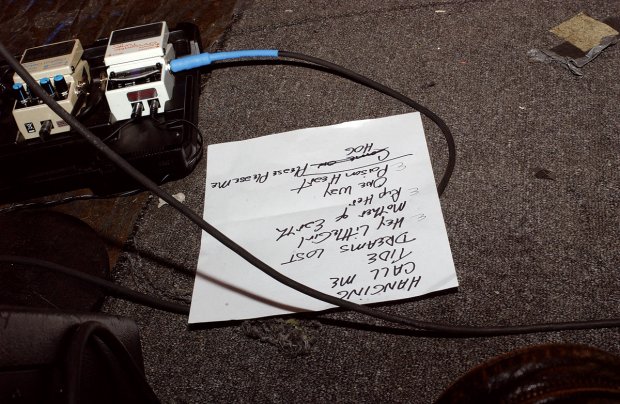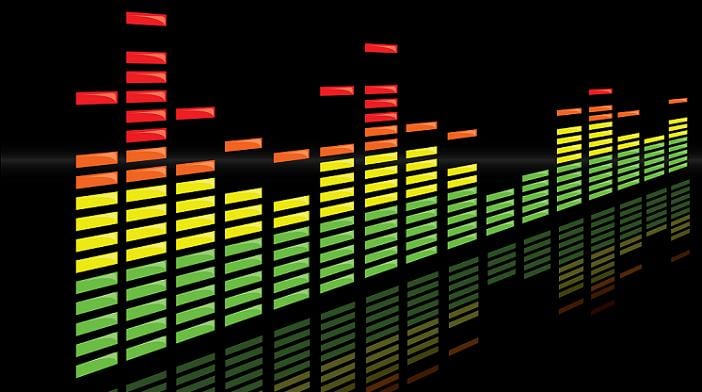 Photo by Abbey Braden
Photo by Abbey Braden
If you're just starting out as an artist, it's difficult to perform if you only know, say, three songs. While there are certain scenarios where you're expected to only play for about 15 minutes, most sets are at least 30 minutes long. So, how do you fill up the time with meaningful material? Well, you need to put your focus on building up a strong repertoire of songs, ideally both covers and originals. Here are a few easy tips to build up your catalog.
Identify a genre and style
While it's good to be eclectic, you might have a hard time gaining a following if you open your set with a classically influenced acoustic guitar piece and then close with a Skrillix-inspired dubstep banger. Bands like Phish and Radiohead draw from a huge repertoire of genres, but they have a distinct style. Phish is a jam band, and their style is typically funky and improvised. Radiohead is an electronic rock band, and their style is typically vocal-led and pensive. Be eclectic – diversify, but don't alienate. Make sure you're performing songs within a coherent style (that's true to who you are, of course!) so that you can market towards a specific audience.
Make an exciting and realistic list of songs to learn
It's good to start with a full list of songs that you'd like to include in your repertoire. Spend a while thinking about the impact of these songs on your own musicianship. Are they challenging you to expand your skill sets and approach to your instrument? Also, think of the impact on your future audience. Will these songs keep them entertained? Will they recognize the songs? If not, can you make them memorable?
Don't be afraid of making a list you know is, at first, too long. It's better to lay all of your options out and narrow them down than to limit yourself to the first batch of songs that comes to mind. Choose the songs that feel right to you and make sure you genuinely enjoy performing them. If you don't genuinely enjoy the original version but feel it could be a hit at shows, reinvent it to your own tastes. But if you're learning a Taylor Swift cover just to get people paying attention to you, when really, you couldn't care less about her music, that will likely come through in your performance. Reinvent the cover to make it enjoyable for you as well – it will translate better live.
[5 Easy Ways to Spice Up Your Cover Songs]
Pick a number of songs that's realistic for you and your goals as a performer. Do you want to play an open mic here and there? If so, have five to 10 songs on rotation. If you're looking to headline venues, you'll want closer to 15 or 20 songs. You might not play all of them each night, but no one wants to see the same set twice; have a few extra songs you can weave in and out of your setlists.
Also, be sure you're choosing songs that are realistic for you to perform. It's always good to push yourself, but it's better to give a great performance of an easy song than a sloppy performance of a technical song.
Create a timeline to learn each song
A musician's life is busy. Most aspiring artists don't make their living from music for a while, so it's likely you're juggling a day job or school with your music career. On top of that, you have a social life and family obligations to keep up with. Be diligent about creating a timeline for when you'll have each song learned. It can be a loose timeline, but having specific dates and goals will keep you grounded.
In your timeline, create a practice schedule. If you end up learning each song quicker than you thought, great job! Move forward. If it's taking you even longer, no worries, just readjust your timeline to fit your schedule. But if you're going to extend your timeline, be sure it's because of genuine effort – not because you were too busy going out for drinks and watching TV. Make it a priority!
Practice often and practice smart
My old voice teacher would tell me, "Practice doesn't make perfect. Practice makes permanent." He was referring to practicing with wrong technique or with distractions. If I spend hours practicing wrong or while I'm constantly refreshing my Twitter, I make permanent habits. It means I'm probably not growing and improving as fast as I could be. When you practice, start slow, stay focused, and take a break when you're losing focus or burning out on a certain section. Shut out distractions and come ready to focus. Maybe you need a cup of coffee and a loud metronome to keep your concentration in check. Figure out what works for you and champion it.
[8 Easy Tweaks to Make Your Practice Time Way More Productive]
Everyone learns differently, so figure out how you learn best. Maybe it's by learning the song from the intro to the end. Maybe you start with the chorus. Just make sure you're using your time wisely and stay focused.
A few things to keep consistent are:
- Practice with a metronome – no one wants to hear you rushing or slowing down the song in the middle of your set. This also gives you the opportunity to start slow and gradually speed up to the tempo of the song.
- Record yourself – even if you don't have a nice microphone, use your phone or computer (Audacity is free). Listen back to hear your progress. You'll be surprised how much different you sound, and it's not always pleasant. So, record yourself until you listen and feel happy with the results.
- Practice with minimal effects – unless you're covering a Sigur Ros song which requires an ocean of reverb, you want to first start off with minimal effects. If you can sing the song without any effects on your vocals and make it sound good, you'll have a much stronger performance once you do add some reverb and delay to your mic channel.
Write often
It's important for any musician to be consistently creative and thinking of the next song or album. Be diligent with your writing; set deadlines and goals so you can stay on top of yourself and get great songs out. While we know you can't just write awesome hit songs whenever you feel like it, you can be proactive. Take your best songs, master them, and constantly embrace new material. Even if it's just a skeleton, if it's good and sounds good enough to play live, people love hearing new material in the works... as long as it's not so in the works that they feel like they're watching you stumble through an incomplete thought.
Actively refresh and rehearse your repertoire
Once you have your repertoire chosen and polished, update and maintain it. Add in new songs every once in a while – you want to keep your audience coming back for more, and they likely won't want to hear the same set every time. Just as you were choosing songs in the beginning, make sure they fit into your style and that they're technically achievable for your performance level at that time. In addition, you always want to make time to practice songs you've been playing for a while. No matter who you are – Steve Vai or Yo-Yo Ma – forgetting songs that you've been playing for years is just part of being human. It's important to keep practicing the songs in your repertoire to keep them fresh. Also, it gives you the opportunity to reinvent them with new skills you've learned over time.
You might also want to read:
- 4 Practice Routine Tips to Progress Faster on Your Instrument
- How to Create a Compelling Setlist
- 3 Tiny Tweaks That Will Make You a Much Better Performer
- 4 Reasons You Shouldn't Be Waiting for Inspiration to Write Songs
Sam Friedman is an electronic music producer and singer-songwriter based in Brooklyn, NY. His music blends experimental ambience with indie-driven dance music. In addition to pursuing his own music, he is a New Music Editor for Unrecorded and is passionate about music journalism. Check out his music and follow him on Twitter @nerveleak.







